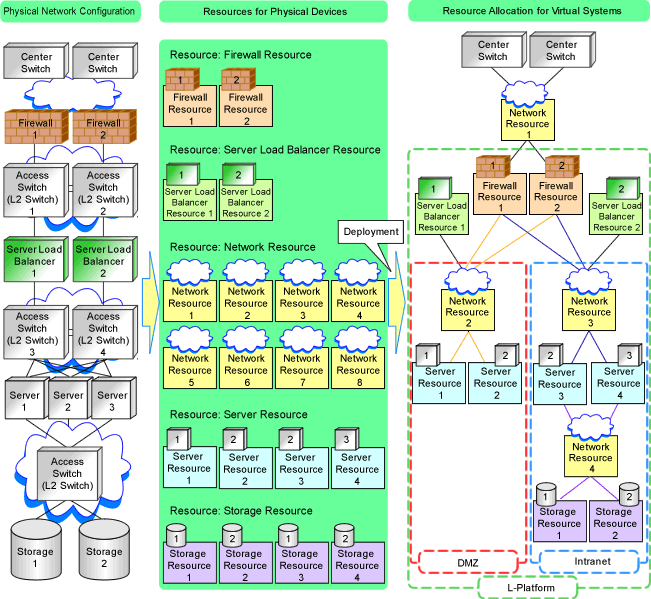This section explains the relationship between the defined physical system and the resources managed by Resource Orchestrator.
Using Resource Orchestrator, you can provide users with virtual systems and also operate those virtual systems. Therefore, it is necessary to understand the relationship between physical systems and the resources configuring the virtual systems in advance.
Depending on how the physical devices are used in the virtual system, physical devices and resources can be in "one-to-one" or "one-to-n" relationships.
The relationship between physical networks and resources is shown below, using "Figure 9.8 Example of Overall Physical Network Configuration" as an example.
Figure 9.9 Relationship between Physical Network Configuration and Resources

* Note: L2 switches or Ethernet fabric switches.
The following figure shows a sample image when physical devices and resources are allocated for a single virtual system (L-Platform).
In this sample image, resources are allocated for firewalls, server load balancers and L2 switches on a one-to-one basis, while resources are allocated for servers and storage devices on a one-to-n basis.
Resource Orchestrator manages L2 switches as network devices. However, when allocated to a virtual system, L2 switches are not displayed on the virtual system because they are included as network resource components.
Figure 9.10 Virtual System and Resource Allocation Example
